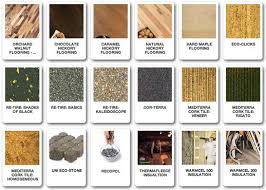Exploring the Benefits of Eco-Friendly Construction Materials in Building Sustainable Structures

The Future of Construction: Eco-Friendly Materials
In recent years, the construction industry has been shifting towards more sustainable and eco-friendly practices. One of the key aspects of this movement is the use of eco-friendly construction materials. These materials are not only better for the environment but also offer numerous benefits in terms of durability, energy efficiency, and overall building performance.
Benefits of Eco-Friendly Construction Materials:
- Reduced Environmental Impact: Eco-friendly materials are typically sourced and manufactured using sustainable practices that minimize harm to the environment.
- Energy Efficiency: Many eco-friendly materials offer better insulation properties, reducing energy consumption for heating and cooling.
- Durability: Some eco-friendly materials are more durable than traditional counterparts, leading to longer-lasting buildings with lower maintenance costs.
- Healthier Indoor Environment: Eco-friendly materials often have low or no VOC emissions, improving indoor air quality and creating healthier living spaces.
- Creative Design Options: With advancements in technology, eco-friendly materials now come in a wide range of options, allowing for innovative and aesthetically pleasing designs.
Popular Eco-Friendly Construction Materials:
Some of the most popular eco-friendly construction materials include:
- Bamboo: A fast-growing renewable resource that is strong, lightweight, and versatile.
- Recycled Steel: Steel made from recycled scrap metal reduces energy consumption and carbon emissions.
- Sustainable Wood: Certified wood from responsibly managed forests helps preserve natural habitats.
- Solar Panels: Harnessing solar energy for electricity reduces reliance on fossil fuels.
- Rammed Earth: A traditional building technique using compacted earth that provides excellent thermal mass properties.
Eco-friendly construction materials are not only beneficial for the environment but also contribute to creating healthier, more sustainable buildings. As the demand for green building practices continues to grow, incorporating these materials into construction projects will become increasingly important for builders, architects, and homeowners alike.
Exploring Eco-Friendly Construction Materials: Top Questions Answered
- What is more eco-friendly than concrete?
- What are eco construction materials?
- What building materials are not eco-friendly?
- What is the most environmentally friendly construction material?
- What is the most eco-friendly material to build with?
- What is the greenest construction material?
What is more eco-friendly than concrete?
When considering eco-friendly alternatives to concrete, several materials stand out for their sustainability and environmental benefits. One popular option is rammed earth, a traditional building material made by compacting layers of earth within a formwork. Rammed earth structures offer excellent thermal mass properties, reducing the need for heating and cooling energy. Another eco-friendly alternative is bamboo, a rapidly renewable resource that is strong, lightweight, and versatile in construction. Additionally, recycled steel is a sustainable choice that helps reduce energy consumption and carbon emissions compared to traditional concrete production. By exploring these alternatives to concrete, builders can make more environmentally conscious decisions in their construction projects.
What are eco construction materials?
Eco construction materials, also known as eco-friendly or sustainable construction materials, are building components that are sourced, manufactured, and used in a way that minimizes their impact on the environment. These materials are typically renewable, recyclable, or biodegradable, and they often have lower carbon footprints compared to traditional building materials. Examples of eco construction materials include bamboo, recycled steel, sustainable wood, solar panels, and rammed earth. By choosing eco-friendly construction materials, builders can reduce energy consumption, promote healthier indoor environments, and contribute to sustainable building practices for a greener future.
What building materials are not eco-friendly?
When considering eco-friendly construction materials, it is important to be aware of building materials that are not environmentally friendly. Some common non-eco-friendly building materials include concrete, which has a high carbon footprint due to the energy-intensive process of cement production; PVC (polyvinyl chloride), a plastic material known for releasing harmful toxins during manufacturing and disposal; and traditional fiberglass insulation, which can contain formaldehyde and other chemicals harmful to both health and the environment. Additionally, materials such as certain types of treated wood, synthetic carpets, and non-recyclable plastics should be avoided in eco-conscious construction projects to minimize negative impacts on the environment. By choosing sustainable alternatives and avoiding non-eco-friendly materials, builders can contribute to creating greener, healthier buildings for a more sustainable future.
What is the most environmentally friendly construction material?
When considering the most environmentally friendly construction material, many experts point to bamboo as a top choice. Bamboo is a fast-growing renewable resource that requires minimal water and no pesticides to thrive. It has a high strength-to-weight ratio, making it an excellent alternative to traditional hardwoods. Additionally, bamboo absorbs carbon dioxide and releases more oxygen into the atmosphere compared to other trees, making it a sustainable and eco-friendly option for construction projects seeking to minimize environmental impact.
What is the most eco-friendly material to build with?
When it comes to eco-friendly construction materials, one of the most frequently asked questions is, “What is the most eco-friendly material to build with?” While there isn’t a one-size-fits-all answer to this question, some materials stand out for their sustainable properties. Bamboo is often considered one of the most eco-friendly building materials due to its rapid growth, renewability, and strength. Additionally, recycled steel and reclaimed wood are popular choices for their reduced environmental impact and ability to divert waste from landfills. Ultimately, the choice of the most eco-friendly material depends on factors such as the project’s location, design requirements, and overall sustainability goals.
What is the greenest construction material?
When it comes to eco-friendly construction materials, the question of which is the greenest often arises. While there isn’t a single material that can be deemed the “greenest” overall, several options stand out for their sustainability and environmental benefits. Materials such as bamboo, recycled steel, reclaimed wood, and rammed earth are commonly considered among the greenest choices due to their renewable sources, minimal environmental impact during production, and energy-efficient properties. Each material has its unique advantages and considerations, making it essential for builders and designers to evaluate their specific project needs and sustainability goals when selecting the most suitable green construction material.
